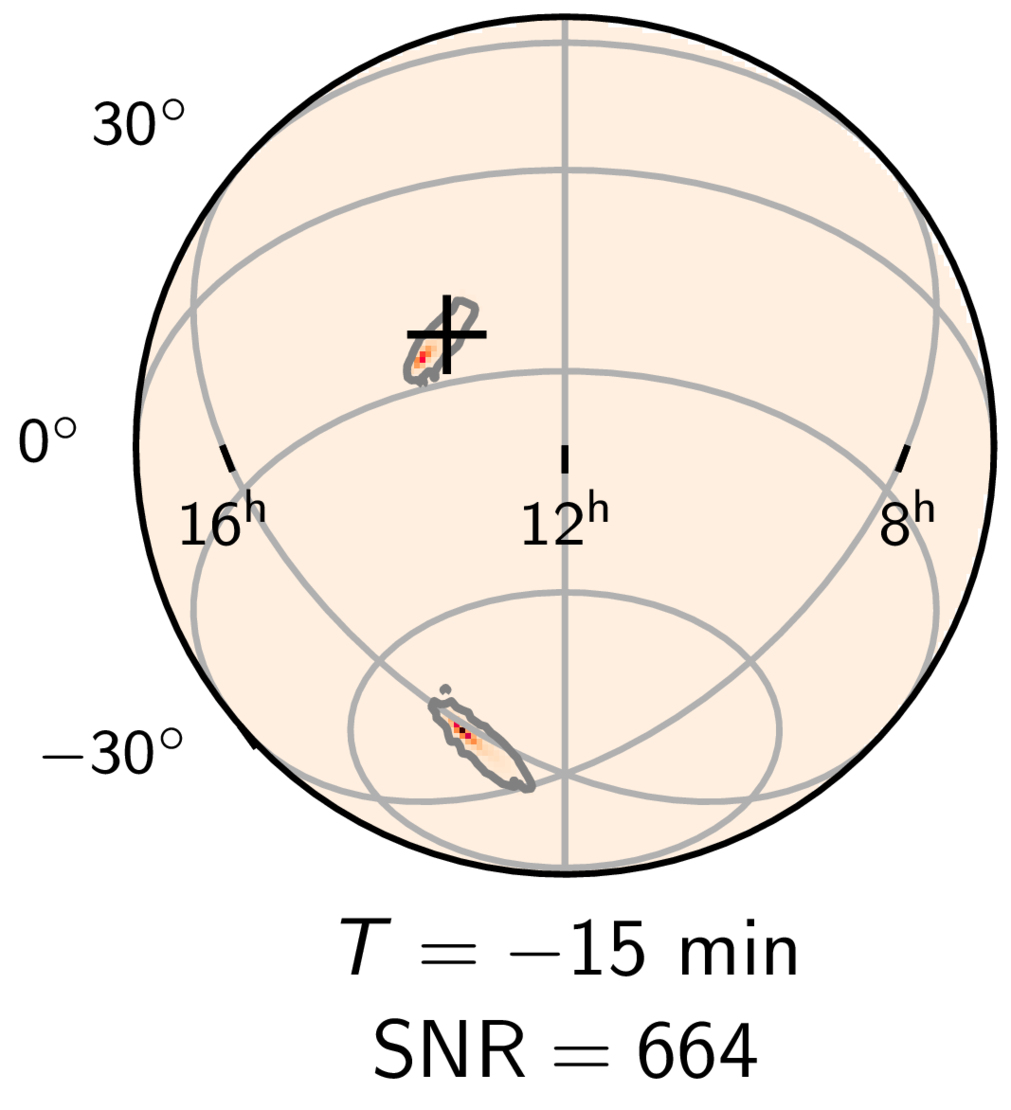Astronomy
Gravitational wave science

The 2015 detection of gravitational waves (GWs) from a binary black hole merger revolutionized physics. It opened up a new window into the universe, allowing us to observe events that do not emit light (black hole mergers) or that are occluded in the electromagnetic spectrum (early universe).
We developed Dingo, the leading machine learning approach to estimate astrophysical source properties from GW measurements [].
This reduces inference times from days to seconds per event [], enables routine use of complex GW models [
] and has led to the strongest evidence for eccentricity in binary black hole orbits to date [
].
We recently introduced Dingo-BNS, an extension of our approach to binary neutron star (BNS) mergers []. These emit both GWs and electromagnetic signals, whose joint observations will enable novel studies of cosmology, nuclear physics, and gravity.
The detection of such electromagnetic signals, however, hinges on the ability to rapidly localize the corresponding source system from GW data.
Dingo-BNS performs rapid GW analysis for binary neutron stars even before the merger (see Figure above), and can thus provide real-time information to searches for electromagnetic counterparts. This enhances the potential for "multi-messenger" observations in current and next-generation detectors.
The Dingo framework is being reviewed for production use by the LIGO--Virgo--KAGRA (LVK) collaboration, and is currently operating in parallel to conventional methods for the analysis of new events in the fourth LVK observing run.
Beyond GW inference, this line of work has also led to new simulation-based inference approaches that integrate physical symmetries [], provide accuracy guarantees [
], and explore new density estimators [
].
Exoplanet Science

With nearly 6000 planets detected outside our Solar System, the study of exoplanets is another thriving subfield of modern astronomy.
Our work has contributed to both the detection and characterization of extrasolar planets. Building on our earlier causal half-sibling regression method [], we have developed new algorithms for removing systematic noise [
] and estimating robust detection limits [
] from high-contrast imaging data.
This has led, for example, to the `precovery' of AF Lep b in archival data recorded before its discovery (see Figure), allowing to place strong constraints on its mass and orbit.
In addition, several additional exoplanet candidates identified by our method will be followed up with the Very Large Telescope based on a recently accepted ESO proposal.
We have also contributed to the characterization of exoplanet atmospheres via Bayesian inference by developing a new approach for combining observational data from different sources [], and by replacing a core component of the standard characterization pipeline with a data-driven model [
].
More recently, we have successfully transferred our GW inference methods (flow matching posterior estimation) to the problem of estimating exoplanet atmospheric properties from observed spectra [], thus replacing the traditional characterization pipeline.
Other
In addition to GWs and exoplanets, we have also worked on glare removal from astronomical images of high-contrast events such as solar eclipses [], and on generative modelling of quasar spectra [
].